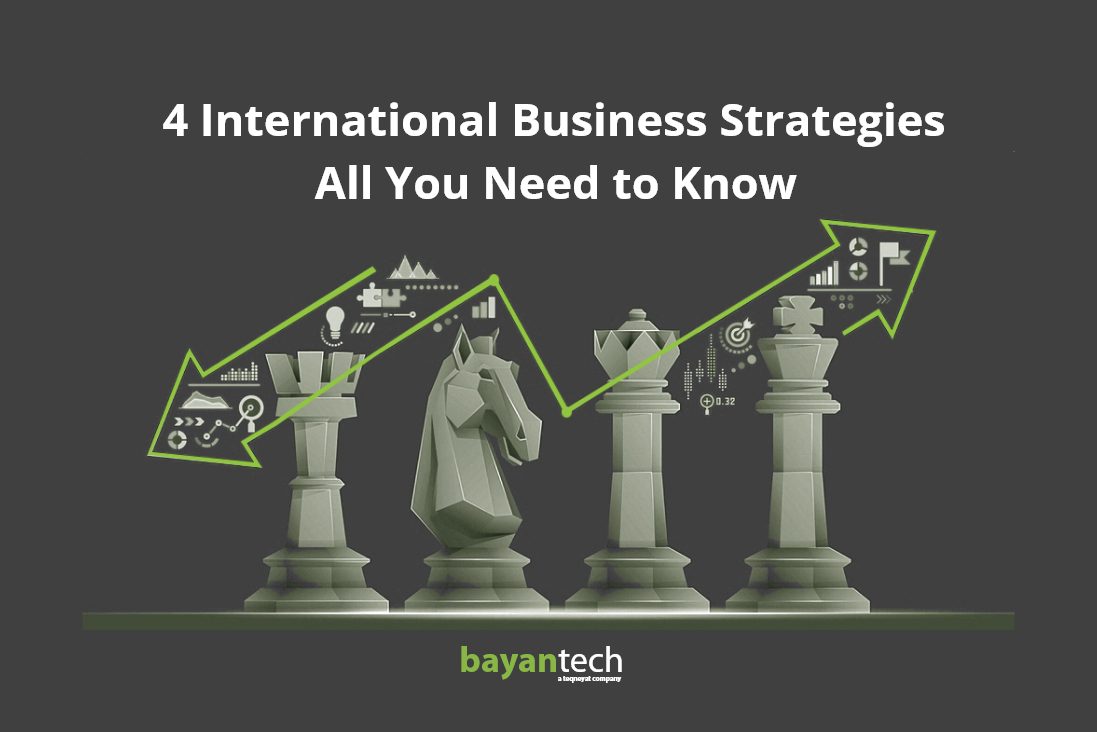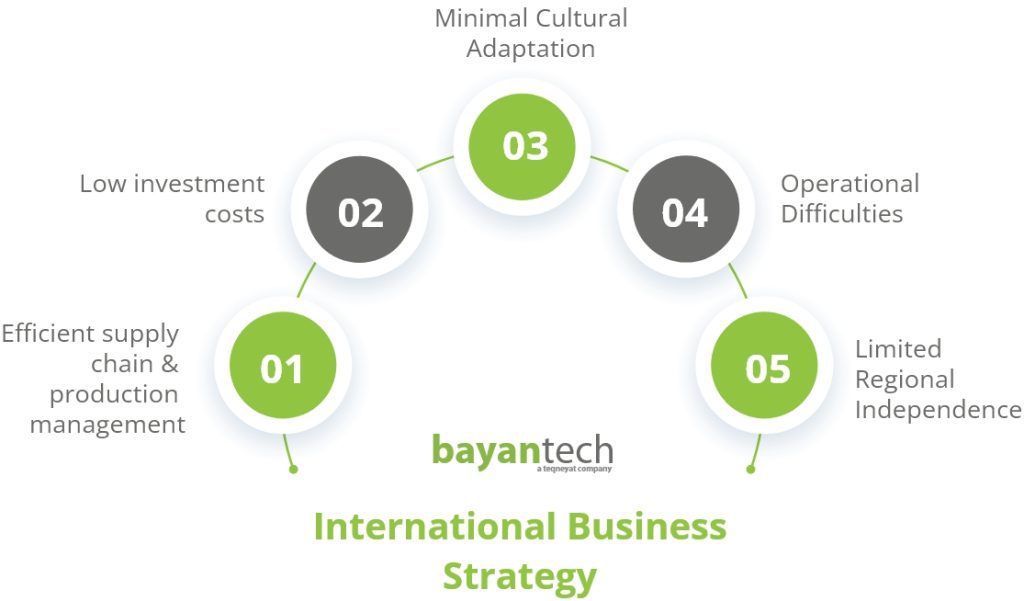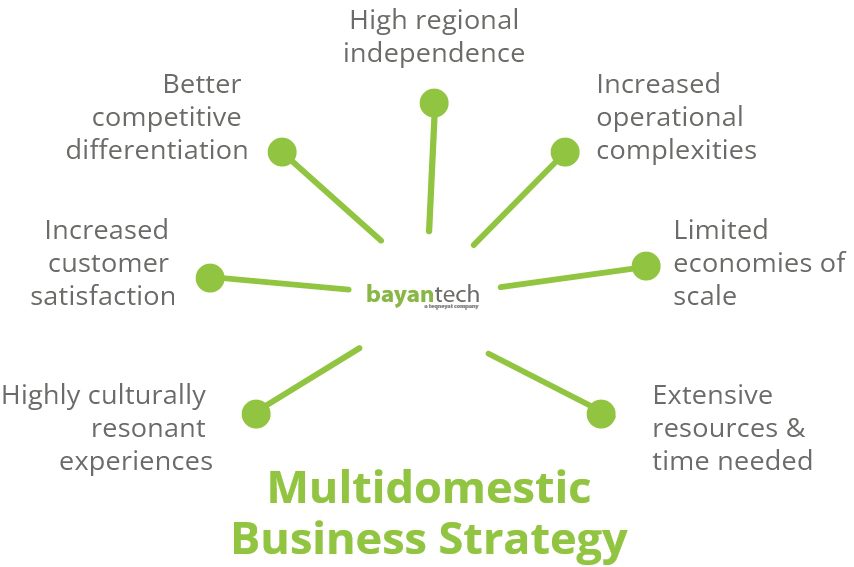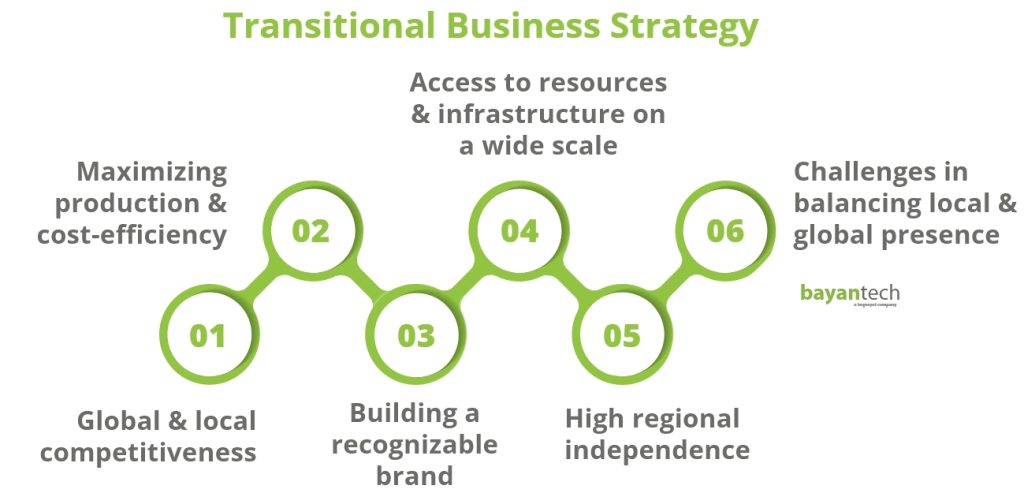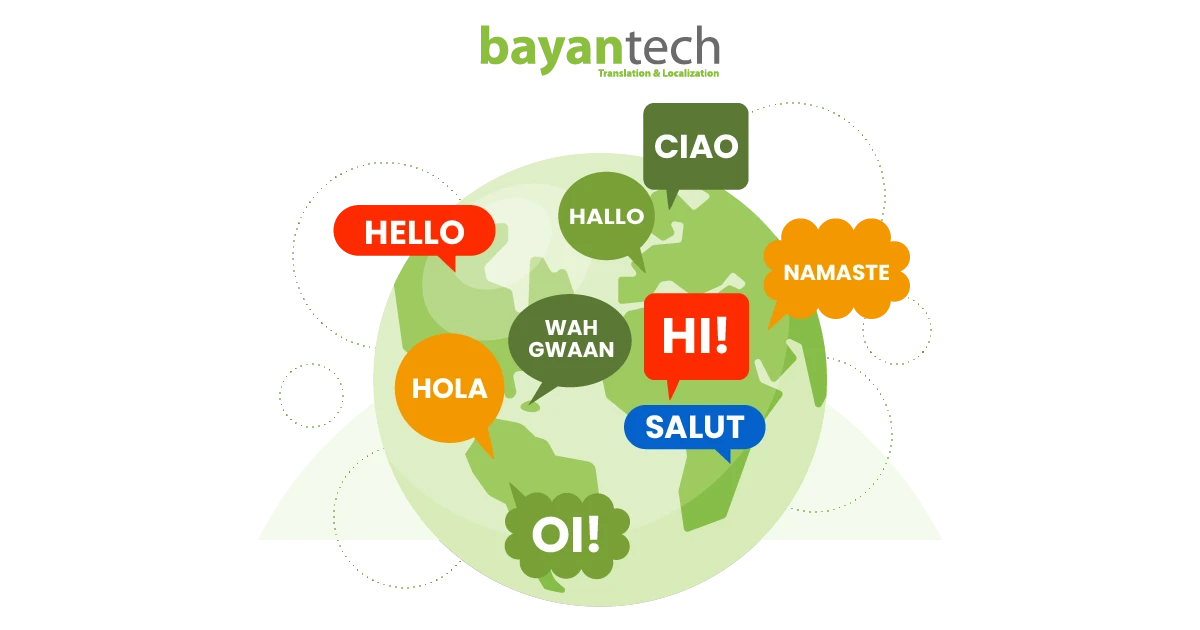What made globally renowned brands like Apple, Nestle, or McDonald’s achieve their long-standing success? And what strategies fueled their large-scale international reach?
Well, many factors are driving their global success – but it all boils down to their international business strategies.
Venturing into the international market does not happen on a whim. It demands thoughtful planning and a good understanding of different expansion strategies.
There are four tried and true international business strategies to choose from – each one with perks and challenges to consider. This blog post tackles everything you need to know about the different international business strategies, the pros, and the cons.
If you want to learn how to take your thriving business to the next level and follow the path of these successful giants, this post is for you!
The 4 Types of International Business Strategies
When businesses decide to outstretch their reach across borders, there are many aspects to consider and several routes to choose from. For example:
- Where will production, resources, and supplies be managed – domestically, regionally, or globally?
- How will business operations be structured across borders?
- Will product offerings require customization or remain standardized?
Careful planning is crucial to navigate these choices successfully. And this is why international businesses opt for one of the four proven international business strategies.
As you see, these strategies are defined by two key pillars.
Local Responsiveness refers to the extent to which you respond to the local market’s demands and local customers’ expectations. A high degree of local responsiveness means your marketing and product or service are heavily tailored for the target locale.
Global Integration is about unifying your approaches and having minor differences across all markets to maximize production and operational efficiency. As such, you focus on standardizing products, operations, and brand image across various regions no matter the scale.
How you balance these two factors depends on the strategy of choice. So, let’s examine each strategy and what it entails in detail.
1. International Strategy
The international strategy, often called the exporting strategy, is about distributing locally sourced products with minimal adaptation to foreign markets while centralizing production and operations in your domestic market. So, we can say that it’s an approach that seeks a middle ground between low local responsiveness and low global integration.
Many brands choose international business strategies in the early stages of their expansion for many reasons:
- Testing products and competitiveness in local markets before large-scale entry, minimizing investment risks.
- Lowering the costs of investment infrastructure, workforce, and customer support in different countries.
- Ensuring efficient supply chain management and production within a single location.
Nonetheless, international business strategies also come with several drawbacks.
- The financial burden of shipping products to foreign markets and the high cost of taxes in the long run.
- The challenges of maintaining smooth trade operations and compliance with foreign trade regulations from abroad.
- Exchange rate fluctuations risks which might lead to instability and increased costs.
- Keeping up to date with changing export rules, product standards, customs documentation requirements, and more.
Although international business strategies don’t prioritize local customization, operating on an international scale still requires website localization and marketing translation. Overlooking the importance of communicating in the local language can lead to poor local resonance and the potential loss of customers in that region.
Example: Netflix
To illustrate how balancing global integration and local responsiveness looks like, let’s look at Netflix as an example. As an international streaming service, it operates on a globally integrated platform accessible in more than 190 countries across the world.
Netflix offers a considerably unified library available to all subscribers except for some restricted content due to regional regulations. However, they still practice local responsiveness to some degree by producing local content. Take “Squid Game” or “Money Heist” for example.
This international strategy allows Netflix to build a consistent brand image while adapting to local tastes and restrictions.
2. Global Strategy
A global strategy concentrates decision-making power and operational control entirely at the corporate headquarters Local subsidiaries are in this case totally dependent on the HQ (or the parent company) acting as pipelines of products and strategies.
And this is why companies that follow this approach have standardized product offerings, brand image, marketing, and overall customer experience across all markets without tailoring for local cultural differences.
So, we can say that global companies focus on consistency, efficiency, and scale through uniformity rather than localization to be able to:
- Build a solid brand identity that is easily recognizable with fewer operational hassles.
- Leverage economies of scale by having one standard product line which contributes to lower costs per unit.
Despite the advantage of unifying operations and branding, some risks still exist if you’re completely detached from local expectations and become culturally irrelevant. As such, investing in some level of localization to keep local customers engaged and satisfied becomes necessary.
And while there is no right amount of adaptation required, at least your products or services, app, website, and marketing material should be comprehensible and functional for target consumers. Let’s see how global brands navigate this complex balance to gain a better understanding.
Example: Apple
Apple strategically combines global integration with selective localization. From their consistent product lines to websites, Apple maintains a sleek minimalist look and feel and provides the same experiences to their global audiences.
However, they also adapt key elements like software, interfaces, and app stores to enhance the user experience locally. Like localizing their software design and delivering localized content and tailored recommendations on the app store based on users’ location.
3. Multi Domestic Strategy
Unlike the global strategy, this local-focused approach prioritizes local responsiveness over global upscaled production. This means you tailor everything, from your products, marketing, and the customer experience to the unique preferences of each locale.
And to be fully adaptive and responsive to every target market, multidomestic companies have local subsidiaries operating independently from the established headquarters to better serve each market independently.
By following a multidomestic strategy, you can:
- Gain a great competitive advantage by capitalizing on local trends and market gaps to differentiate your brand and outperform local competitors.
- Provide local consumers with a highly personalized experience to drive higher satisfaction and loyalty rates.
However, some of the challenges that come with implementing a multi-domestic business strategy include:
- Extensive time and on-ground resources are necessary to research target markets and develop a distinct strategy that aligns with each country.
- Producing locale-specific products and marketing materials can lead to higher operational and production costs.
Given that this strategy employs a high degree of local responsiveness, localization, and cultural adaptation become imperative to the success of this business strategy and to building a connection with local customers.
Example: Nestlé
Nestlé and all of the separate brands that fall under its umbrella have a very diverse product portfolio that varies from one region to another. Furthermore, each regional branch has a high level of control over its marketing campaigns, product variations, and operations.
Nestlé has mastered local adaptation across the world by developing completely local flavors that cater to local palates exclusively sold in certain countries such as Maggi Special Masala in India and Deep Macha KitKat in Japan.
4. Transnational Strategy
A transnational strategy combines elements of global and multi-domestic strategies by prioritizing both local responsiveness and global integration by striking the right balance between them.
They standardize backend manufacturing and distribution across countries to achieve economies of scale. However, when interacting with local markets, they allow for flexibility and localization in promotional messaging and sales channels.
As they do so, countries that implement a transnational strategy expand their operations at a full scale in various markets while operating primarily from the headquarters in the home country.
By doing so, these companies can enjoy the benefits of a unified brand — which are:
- The ability to compete with both global and local companies.
- The advantage of optimizing production for maximum efficiency leads to lower average costs per unit and greater economies of scale.
- Access to worldwide resources, infrastructure, and local capabilities drives innovation, boosts efficiency, and reduces costs.
However, similar to all international business strategies, the transnational approach also presents some challenges especially in coordinating between subsidiaries and determining the degree of local responsiveness needed.
Example: McDonald’s
Large fast food chains always manage to strike a balance between efficiency and the need to adjust to local preferences within various regions. For example, as the data suggests
While McDonald’s operates more than 40.000 branches in over 100 countries around the world., you can still enjoy a localized “McSpicy Paneer” in India, a “McFiesta Burger” in Argentina, or “Shrimp burgers” in Japan.
Key Takeaway: The One Important Thing You Should Know Before Venturing into International Markets
When it comes to choosing a strategy for your international expansion plans, there is no right or wrong approach. It all depends on factors like your industry, company size, business goals, available resources, and risk tolerance.
However, one key player that determines your success is the ability to attract local customers in new markets. And this is why having an effective translation and localization strategy is so important.
So, even with a global strategy, you must consider how your business communicates and how your marketing materials can resonate locally as this directly influences how customers perceive and engage with your brand.
Here’s how business translation services are integral to any expansion journey:
- Effective market penetration: Localization helps overcome language barriers and gives you great accessibility to a broader customer base.
- Successful Business Relationships: Overcoming communication barriers helps you connect with partners, clients, and end-customers on a deeper level and build profitable relationships more easily.
- Cultural Sensitivity: Localization demonstrates respect for diverse cultural identities and ensures that your content is appropriate and reflects cultural values.
- Regulatory Compliance: By translating business material, product manuals, or online store policies you streamline your entrance, build trust with local authorities, and comply with national regulations.
Ready to Find the Right Language Partner for Your Business?
Find out how to choose a business translation agency that meets your specific business needs in our comprehensive checklist.
Whether Local or Global, Let Bayantech Guide You Through All Roads to Success
As a leading business translation agency for over two decades, bayantech’s language solutions are tailored to align with all international business strategies and streamline your expansion journey.
Our hand-picked native experts are equipped to amplify your brand voice in +120 languages and empower your competitiveness across markets. By leveraging advanced technologies and systems, our scalable process handles even the largest projects with unmatched speed, efficiency, and cost-effectiveness.
Ready to scale your brand beyond borders? Request a quick translation service quote and let’s kickstart this journey.
Unsure where to begin your localization journey? Contact us today and let’s discuss your next step!
8 Steps Every Medical Interpreter Takes
Looking for a medical interpreter? Discover the career path of medical interpreters and qualifications they need to acquire to take on interpreting jobs.

